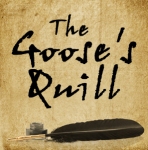It’s no secret that writers tend to spill words on a page when they’re trying to deal with an issue they’re struggling with, or emotions that are overwhelming. When my best friend Donna Hanson Woolman died at age 32, that experience became my Masters’ thesis short story.
Followers of my blog have seen me write through other periods of grief, whether it be the lesser loss of a celebrity who had touched my life like Davy Jones, or the greater loss of family. On here you can find my goodbyes to my Aunt Clare and Uncle Ed (on the same day), my Uncle Bill, my Aunt Marge, my cousin Charley, my friend’s 5-year-old son Gavin, and even our family dog Cody. Obviously, I write to get my thoughts in order. I write to get the pain out of my heart and onto the page. Because, just like in writing fiction, once it’s on the page I can deal with it. That first draft of raw emotion spills out, and then I can find some perspective. Find the words, the voice, to express myself and my grief properly.
So when I took Catherine Stine’s workshop at the Philadelphia Writers’ Conference this year, something she said resonated with me. She said all of her books started with a “big question” that she was struggling with. As an example, she said she was a Quaker, and therefore anti-violence, but she wondered if sometimes violence (particularly war) was the only answer. And how could those two things be reconciled? She wrote a book to explore all the options.
She also made a point to say that we as the writer should be careful not to answer the big question for the reader—that we should lay out all the evidence and arguments on both sides and let the reader come to their own conclusion. She didn’t tell us the answer she found to her big question.
I got to wondering if I am asking “big questions”—if that’s why I write whatever story I am writing. If I am, it’s subconsciously. I certainly don’t look for questions to answer. But I would wager that if I look at my stories, there is a big question buried in there somewhere. It’s worth a look, because if I can figure out the big question, it will clarify my explanations of the books and be useful in marketing. If the books are not sold yet, it will also be useful in revision—helping to focus on the heart of the book.
What about you? Do you consciously write to explore a “big question”? Or do you find that after you’ve written, you explored a question you didn’t know you had? Or does a big question never enter into the equation for you and you write for completely different reasons?


